The Orton-Gillingham Approach to Reading and Spelling
When I developed All About Reading and All About Spelling, I combined the key features of the Orton-Gillingham approach with the latest research and proven spelling rules. But why? What’s so special about Orton-Gillingham?
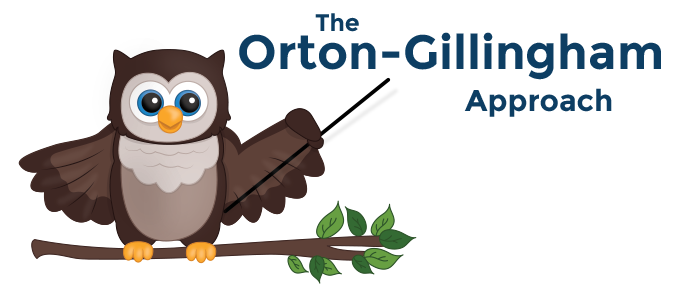
What Is Orton-Gillingham?
Orton-Gillingham (OG) is a powerful approach to teaching reading and spelling that uses instruction that is multisensory, sequential, incremental, cumulative, individualized, phonics-based, and explicit. Though often touted primarily as an instructional method for children with dyslexia and other learning challenges, the OG approach helps make reading and spelling easy for all children.
Who Were Orton and Gillingham?
Dr. Samuel T. Orton (1879-1948) was a pioneer in the study and understanding of dyslexia. He studied numerous children with language processing issues and eventually developed teaching principles designed to help these children learn language more effectively. One of Dr. Orton’s students, Anna Gillingham (1878-1963), further developed Orton’s ideas and eventually combined his teaching methods with her own understanding of language structure. The first Orton-Gillingham manual was published in 1935.
Why Does the Orton-Gillingham Approach Work?
The Orton-Gillingham approach helps take the mystery out of reading and spelling by focusing on why words are spelled the way they are. Though the English language contains just 26 letters, these letters combine to create approximately 44 speech sounds, and there are over 250 ways to spell those sounds. But the OG approach translates the spelling of these sounds into phonograms and demystifies reading and spelling by teaching students to apply rules and generalizations that help make what was once difficult much easier! (Click to download our Orton-Gillingham Approach poster!)
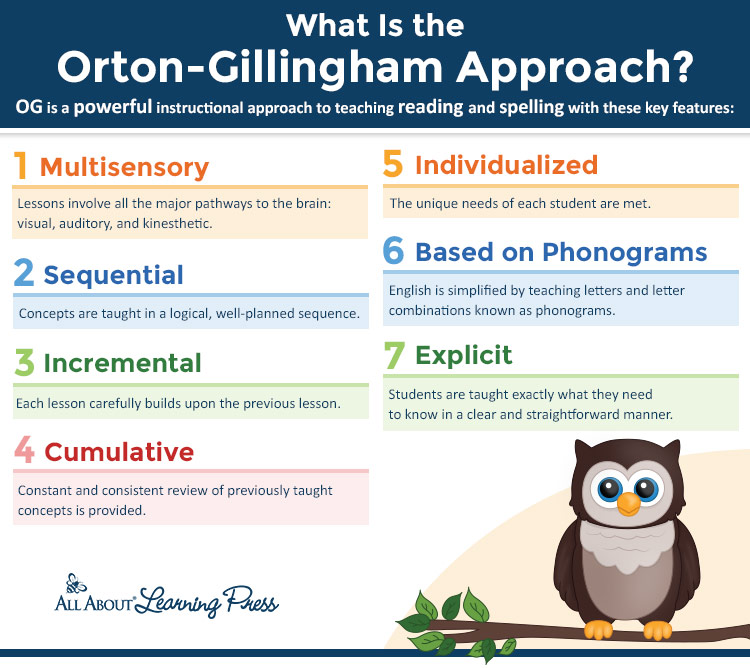
In a nutshell, Orton-Gillingham works because it …
- instills confidence;
- helps children overcome learning disorders;
- makes it easier for children to learn to read, including children with dyslexia and other learning challenges.
Are you ready to explore all the features that make the Orton-Gillingham approach so effective? Read on!
What Are the Key Features and Benefits of the OG Approach?
Multisensory
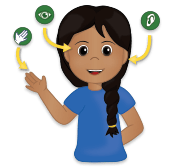
Multisensory instruction is the hallmark of the Orton-Gillingham approach. This technique focuses on the idea that when children learn through three major pathways to the brain—visual, auditory, and kinesthetic—they learn more than when they are taught through only one pathway. But the real power comes when you engage the senses of sight, sound, and touch all within the same lesson. So with the OG approach, you don’t have to figure out if your child has a particular learning preference because all three pathways are already built in to every lesson.
Sequential
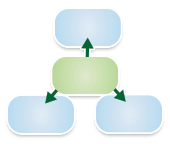
When instruction is sequential, lessons are presented in a logical, well-planned sequence. This sequence allows children to make easy connections between what they already know and what they are currently learning–an important step in achieving long-term learning. And that makes learning a rewarding experience for your child.
Incremental

With incremental instruction, each lesson builds carefully upon the previous lesson. This helps your child move smoothly and naturally from simple concepts to more complex ones, ensuring that there are no gaps in his learning. It’s a lot like climbing a ladder: when lessons are incremental, each rung of the ladder helps your child get closer to the goal of reading and spelling. Even students who have experienced failure with other programs can learn to read and spell with this approach.
Cumulative
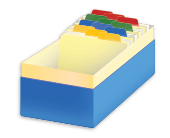
Two of the most important components of cumulative learning are mastery and constant and consistent review of previously taught skills. When instruction is cumulative, students master one concept before moving on to a more advanced concept. Those concepts are further reinforced with review that is integrated into every lesson. The goal of mastery and review is to make sure that the brain permanently stores, manages, and retrieves information for later use; in short, to achieve learning that “sticks.” When a concept is learned and mastered, the goal of long-term learning has been reached.
Individualized

Because everyone learns differently, the Orton-Gillingham approach is always concerned with the needs of the individual. Anna Gillingham once said, “Go as fast as you can, but as slow as you must.” Curriculum that follows this approach makes it easy for you to teach to your child’s individual strengths while at the same time respecting the child’s pace. Consequently, this approach works for all ages—beginning readers, intermediate students, teens, and adults.
Based on Phonograms
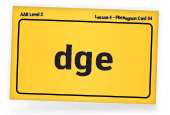
The Orton-Gillingham approach simplifies the English language by focusing on why words are spelled the way they are. By teaching the phonograms and the rules and patterns that spell the vast majority of English words, the OG approach takes the guesswork out of reading and spelling. When a student has a working knowledge of the phonograms and their sounds, reading and spelling are much easier. In fact, even children with reading disorders like dyslexia can overcome the language processing issues associated with these disorders.
Explicit

In an Orton-Gillingham reading or spelling program, students are taught exactly what they need to know in a clear and straightforward manner. Students know what they are learning and why they’re learning it. This direct instructional approach helps children master skills and gain confidence. When instruction is explicit, there is no guessing, no ambiguity, and no confusion.
All About Reading and All About Spelling make it easy to use the Orton-Gillingham approach to teach reading and spelling. Our lightly scripted, open-and-go teacher’s manuals walk you through each step—with no experience, special training, or extra prep time required by you! You will be teaching like an expert from the very first lesson, and your child will receive all the benefits of this effective method.
For more details, be sure to download our free e-book, The Power of the Orton-Gillingham Approach. And let us know in the comments below if you have any questions about teaching reading and spelling. We’re here to help!
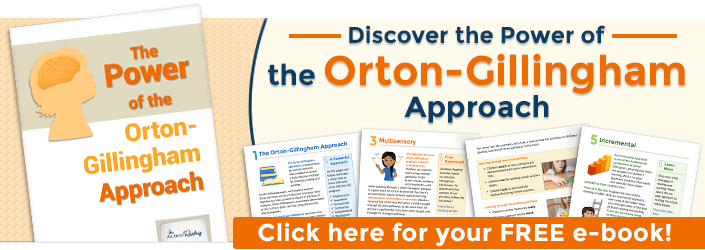




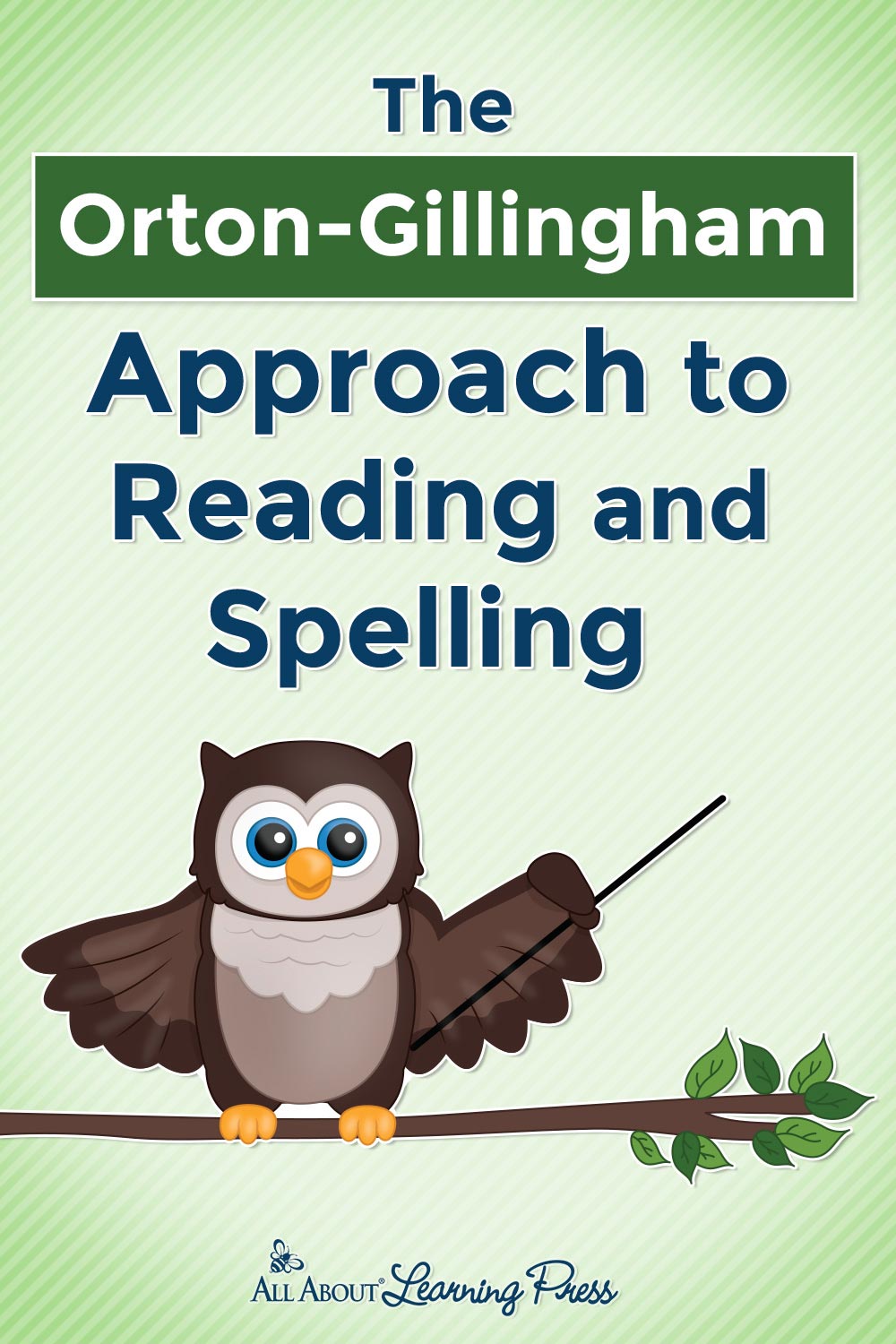










M Long
says:Can’t wait to try!
Robin
says: Customer ServiceWonderful! Let me know if you need help with placement or anything else. I’m always happy to help!
Albert
says:Thanks for the info
Robin
says: Customer ServiceYou’re welcome, Albert.
Debra
says:I’m so happy I found your site.
Robin
says: Customer ServiceDo you have any questions or specific needs, Debra? I’m happy to help.
Echezolam
says:Can I get a full intervention program for dyslexia that used orton-Gillingham approach
Robin
says: Customer ServiceEchezolam,
All About Reading and All About Spelling are both based on the Orton-Gillingham approach and are excellent options for students with dyslexia.
As for a full program, the Orton-Gillingham approach is specific to reading and spelling. It doesn’t apply to other subjects like math and history. And, sadly, I am unaware of any company that put together a full-package every subject curriculum that includes Orton-Gillingham-based instruction in reading and spelling. It will be necessary to choose Orton-Gillingham-based materials for reading and spelling, and then choose the other subjects separately.
P Semko
says:Thank you for newsletter information.
Robin
says: Customer ServiceYou’re welcome. Let me know if I can help with anything else.
Christa Wolansky
says:I work in a social services home for children. Many have never attended school until placed in this home. Many are woefully behind. I’m struggling with a 1st grader after months of tutoring still doesn’t know the letters in his name. I review this with him three days a week. Thanks for any help.
Robin
says: Customer ServiceChrista,
I’m so sorry to hear that this child is still struggling with letters.
First, here is our ebook on Help Your Child’s Memory that will be helpful. The information on the learning funnel may be the most applicable. When a child struggles to learn letters like this, you will need a different approach.
Let me know if you have tried this:
Work on one letter for as long as it takes for him to master that one letter. You could do alphabetical order, or you could start with the first letter of his name. Do activities focused on that letter. Check out the many free Letter Learning activity downloads we have on our blog.
Write the letter in Salt Trays or other stuff like shaving cream, paint, chalk on the sidewalk, whatever. Send him on a search in favorite books for that one letter.
Sing the ABC song to him and have him point to the letter you are working on when you come it. You will likely need to cue him when to point but encourage him to also sing the letter name with you.
Do all of this and more for days on end, until he can write the letter without having to see it or be told how it looks. Until he can find the letter easily in a page of writing. Until he can name the letter without hesitation when you point to it.
_______
Only then start learning a second letter. Review the previous letter daily. Sing the ABC song and cue him to sing the letter names for the previous letter and for the new one, helping as much as he needs. Have him form the new letter in dough or write it on the window or whatever multiple times a day, but also have him write the previous letter a couple of times. Again, keep working on the letter until he can write it and find and name it easily, but always reviewing the previous one daily.
Do this for each new letter, taking as much time to master each letter, and reviewing all the previous letters daily. In time, some of the previous letters will get really easy. As you near the end of the alphabet, you can try not reviewing every letter every day. But be sure to review every letter at least a couple times a week. At any time, if he has difficulty with a letter, it should go back into daily review for at least a week, preferably two.
This incremental, mastery-based approach will likely lead to him mastering the alphabet. For some children, all the letters are just too easy to confuse with each other. The names make no sense. Why is a B “bee” and a C “see”? And so many of them look alike. A and H, N and M, B and P, C and O. It’s a wonder more children don’t struggle!
_______
Also, with struggling learners, three days a week may not be often enough. Too much time between reviewing what was learned can allow for too much to be forgotten. Is there anyone that could review letters with him for even just 5 minutes on the other four days a week?
_______
I hope this helps some, but please let me know if you have additional questions or need more direction. Thank you for your work helping this child!
Robin
Marilyn Barmore
says:I am a former teacher and I am looking for a way to help my struggling grandchild in reading. She is in the first grade.
Robin
says: Customer ServiceMarilyn,
Do you have questions or need help with placement? I’m happy to help!
Lauren Ralicki
says:I am an Instructional Chair for the Special Education Department. I am also a Reading Specialist and Learning Disabilities Teacher Consultant. I am interested in receiving your weekly newsletter to share with various teachers.
Robin
says: Customer ServiceLauren,
I have added you to our email newsletter. You should have received a welcome email by now. If not, let me know.
Debbie Sifford
says:Mt daughter has struggled with phonological memory skills. She has difficulty with rapid retrieval.This has impacted her writing skills Her expressive skills are much stronger. It has been recommend to find an Orton Gillingham based remediation program
Robin
says: Customer ServiceDebbie,
I’m sorry to hear your daughter has struggled with such things. Is there anything I can help you with, questions about All About Reading or All About Spelling or anything else? I’m always happy to help!
Fontain
says:My daughter has dyslexia and we didn’t find out until 8th grade. I’m looking for ways to help her get caught up in skills she missed out on.
Robin
says: Customer ServiceFontain,
I’m happy to help you with any questions you have. Here is our Dyslexia Resource Page; it should be helpful for you. But let me know how I can help too.
Brandy V.
says:Should my son be tested to determine where to start? He is 11
Robin
says: Customer ServiceBrandy,
Yes, we have placement tests to help you determine which level to start with. However, if you have questions about placement or anything else, I’m happy to help.
Rubye Benjamin
says:Interesting
Robin
says: Customer ServiceThank you, Rubye.
Li
says:Hi. What should I do when a student knows how to spell “there” and “they’re”, knows the meaning of these words, but when I dictate the sentences, they still put “there” instead of “they’re”?
Robin
says: Customer ServiceGood question, Li!
Mastering homophones is a work of some time! (Most adults will still on rare occasions misuse there, they’re, and their when they are writing quickly or are otherwise distracted.)
With such confusion, it may be helpful to focus on just one of the words for a while until your student has its usage down well. Start with they’re and let your student know that it is the spelling to use for all the dictation you will do for a while. Then practice sentences that use they’re. Discuss how they are all “they are” doing something, a group of individuals.
After a couple of days of just using they’re successfully, let your student know that you will do a mix of they’re and there and that they will need to focus carefully on which are talking about a group of individuals and which are not. If is the group, then they need to see if they can say “they are” instead of “they’re.” If they can, then they know that it must be “they’re” in that sentence. If “they are” cannot be substituted, then the sentence must have “there.”
I’m thinking this will help clear things up. The word “there” is usually the tricky one, as it has so many definitions and they are so vague and allusive. Well, the definition that means “that place” is clear, but the majority of the times we use the word “there” that is not the meaning we are using. Because of the complexity of the usages of the word “there,” it is often easiest for children to learn when to use “they’re” and “their” and then learn if “they’re” or “their” don’t work, then it must be “there.”
Just keep in mind it can take a lot of time for children to master the use of homophones, especially when they are doing their own writing (like creative writing, essays, and such).
I hope this helps! Let me know if you have additional questions.
Sheila Heberlein
says:Can Orton Gillingham help kids who write numbers & letters backwards?
Robin
says: Customer ServiceSheila,
An Orton-Gillingham-based approach can help children who have difficulties with letter and number reversals, but reversals aren’t a focus of the approach.
Rather, check our this article on How to Solve Letter Reversals for tips and ideas that can be used with any approach.
Please note that writing numbers and letters reversed is considered a normal part of learner for those in their first year or two of learning to read and do math. When babies are first learning about the world around them, they must learn that an object does not change what it fundamentally is if it changes direction. A chair is a chair is a chair no matter if it is facing right, left, or upside down. Then, suddenly, we teach them that b and d are totally different things and a 3 is wrong if it faces the other way. It’s no wonder that more kids don’t have trouble with reversals! So, it takes time for children to master directionality of letters and numbers.
However, if your child is older and has been reversing letters and numbers for some time, it may take a different approach to help them overcome the confusion. Let me know your child’s age, how long they have been learning to read, and what kind of errors they are making. I’ll be happy to help.
Lindsay
says:.
Lora
says:My child is struggling with this form of learning. Can someone please help me understand? His in 1st and coming to hate school and I don’t want him to be like that. Please, any help is appreciated.
Robin
says: Customer ServiceI’m happy to help, Lora.
What is it you need help understanding? In what way is your child struggling? There could be a lot of reasons. One reason could be that some school implement an Orton-Gillingham based approach, but they move through the material at a pre-set pace that may be too quick for some of the students. Or, maybe your child needs more work with the Reading Readiness Skills, especially Phonological Awareness, so he isn’t ready for decoding work yet.
It’s hard to know what the issue may be without knowing more about what his struggles look like.
We can continue to discuss this here, or you can reach me at support@allaboutlearningpress.com. I’d love to hear from you to help you help your child.
LariJo
says:Looking for this approach for my son.
Robin
says: Customer ServiceDo you have any questions, LariJo? I’m happy to help.
Elizabeth Pollitt
says:Hi
I am looking into this approach for my son.
Robin
says: Customer ServiceElizabeth,
I’m happy to help with any questions you may have about placement or anything else. May I help you?
Cathy Waldren
says:How do I pick what level my 8yr old daughter going into 3 grade needs. Do I start at level 1
Robin
says: Customer ServiceGood question, Cathy. We have placement tests to help you decide which level your student needs. Here is the link to our reading placement test and to our spelling placement test. Please note that most students will need different levels for reading and spelling.
Once you have done the placement tests with your daughter, let me know if you have questions or concerns. I’m happy to help! Particularly, let me know if there are specific concepts or skills that she has trouble with. I may be able to direct you to free resources to build up her knowledge in those areas.
Eileen
says:Thanks.
Robin
says: Customer ServiceYou’re welcome, Eileen.
Jennifer Roberts
says:Love this method
Robin
says: Customer ServiceThank you, Jennifer.
Christine C Gould
says:Thank you! I’m a retired teacher trying to help my niece teach her four children three of which are dyslexic , and one of them high school .
Robin
says: Customer ServiceYou’re welcome, Christine! If you have any questions about placement or anything else, let me know. I’m happy to help!
Susan Van Nostrand
says:All teachers should follow this strategy for learning. Every student learns different and multi-sensory teaching is crucial.
Robin
says: Customer ServiceThank you, Susan!
Sandra Nabayego
says:Hi. I am a special needs teacher with students with dyslxia who needs to learn how to read and write. How do i begin helping them?
Robin
says: Customer ServiceSandra,
You can begin to help your students by ensuring they have mastered all the Reading Readiness Skills necessary for reading success. Very often, dyslexic students struggle with Phonological Awareness Skills. If these skills are not taught, these students may never be completely successful with reading.
Abigail Asante
says:My child is 9 years but unable to read and write. Please what do you recommend.
Robin
says: Customer ServiceI’m happy to help, Abigail.
We recommend you start with our All About Reading placement test. It will help you determine which level your child needs, even if he is unable to read at all.
Let me know how he does on the placement test, and which questions and skills he has trouble with. This will help me help you know what to do next and when to start All About Spelling as well.
As this blog post discusses, both All About Reading and All About Spelling are Orton-Gillingham based. This is a proven approach for helping students with dyslexia and other learning disabilities. Marie Rippel, author and creator of the programs, is a member of the International Dyslexia Association and has instructed graduate-level courses in Orton-Gillingham Literacy Training offered through Nicolet College in Rhinelander, Wisconsin. She has previously served on the Board of Directors of the Literacy Task Force in Wisconsin and tutored students for more than 20 years. Marie’s son is severely dyslexic, and being told by experts that he would never learn to read led directly to her creating All About Reading and All About Spelling. You can see a short video about her son’s story, Failure Is Not an Option.
Carolee Thompson
says:I am interested in learning more about your approach to teaching reading and spelling.
Robin
says: Customer ServiceGreat to hear, Carolee! Do you have specific questions? I’m happy to help!
All About Reading and All About Spelling are:
Multisensory
Easy to Teach
Mastery-Based
Customizable
Thanks for your interest!
Marilyn
says:Loved the banana split game. Would love to see more!
Robin
says: Customer ServiceIf you enjoyed the Banana Splits Game, check out these:
Word Flippers
12 Great Ways to Review Reading Word Cards
“Swatting Phonograms” – A Fun Phonogram Activity
Winter Reading Bundle
Penguin Pack
Polar Bear Pack
Reading Activity Bundle
Marilyn
says:I would love to hear of ideas that keep the child interested and not bored with the same old stuff.
Robin
says: Customer ServiceSure, Marilyn! We have lots of great activities and resources on our blog and website. Check out our Free Resources page, as well as our Reading blog posts and Spelling blog posts.
Is there something specific you were looking for? Let me know! I’m happy to help.
Anna Grigoli
says:Please include me on the newsletter emails.
Robin
says: Customer ServiceI have signed you up for the email newsletter, Anna. You should have received a welcome email by now. If you have not, please check your spam folder. If it is not there, please let me know.
June
says:I’ve been using All About Reading and Spelling with our homeschooled 7 yo since last year and I am extremely happy with the progress he’s made. He started out struggling to read consonant blends at the end of kindergarten and has grown into a confident reader of chapter books in just under a year. Every aspect of the program is very well thought out! I wish a similarly well-developed and systematic curriculum existed for early writing (not spelling).
Robin E.
says: Customer ServiceWow, June! Your 7-year-old has made fantastic progress in such a short time. Way to go!
Lura
says:The Orton Gillingham approach really helped me as a teenager become a better speller.
Robin E.
says: Customer ServiceThat is wonderful to hear, Lura!
Yvonne
says:love to get tips